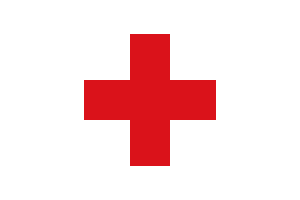Most kids are inquisitive. With the Japanese tsunami news coverage all over television, your kids may be asking you what a tsunami is. So here are some helpful hints of what to say:
Eileen Wacker, CEO of ONCEKids, has been affected by the recent tsunami and earthquake in Japan. As both a parent and a professional who has spent significant time in Asia, the events have created a very personal reaction. She reflects on the horrific situation and courageous efforts currently underway, "I am very saddened by the continued struggle of the Japanese people to overcome the obstacles created by the earthquake and its aftermath. Footage of the tsunami was difficult to watch. I saw a video clip of a couple in their early 80s. They were finishing cleaning up what was left of their home so they could go and help their neighbors and others. We will give to the Red Cross to make sure people have minimum needs met. We're rooting for you Japan!"
A tsunami (pronounced soo-nahm-ee) is a series of huge waves that happen after an undersea disturbance, such as an earthquake or volcano eruption. (Tsunami is from the Japanese word for harbor wave.) The waves travel in all directions from the area of disturbance, much like the ripples that happen after throwing a rock. The waves may travel in the open sea as fast as 450 miles per hour. As the big waves approach shallow waters along the coast they grow to a great height and smash into the shore. They can be as high as 100 feet. They can cause a lot of destruction on the shore. They are sometimes mistakenly called “tidal waves,” but tsunami have nothing to do with the tides.
For elementary school-age children (ages five to 10), parents should start with the basics by explaining that two natural disasters struck Japan.
Connect cause to effect
After understanding the disasters your child might just question them. Kids this age have a hard time connecting cause and effect. So, the next step is to explain the results of a quake and tsunami, such as what can happen to people when buildings and houses collapse, or when a massive wall of water sweeps away homes, cars and ships.
Personalize the information
Once your child grasps the big picture, parents need to personalize the information by explaining how the quake and tsunami affected people's lives. Parents can say something like, "When the earthquake and tsunami happened, homes, schools and buildings fell down and were washed away. Lots of people died -- including people's moms, dads, brothers and sisters." School-age kids will personalize this information and relate it to their own life.
Provide reassurance
Now that your child grasps the basics, your role is to provide reassurance that he/she is safe and does not have to worry about an earthquake or tsunami occurring at home. Explain that we have safe buildings, our country is well-prepared in case of emergencies, and talk about the availability of fresh water and food.
Also remind your child that mom, dad, grandma, grandpa, etc. love him/her and are here to keep him/her safe. If your child expresses concern about the kids in Japan, explain that there are nice adults who have gathered from all over the world to help.
Be honest without saying too much
It's easy to get carried away and say more than a school-age child needs to know. Parents should be open to questions without providing too much information that could become scary or overwhelming. Avoid watching news coverage or surfing the Internet with potentially graphic images while children are present. "Wait until after bedtime to turn on CNN.




No comments:
Post a Comment